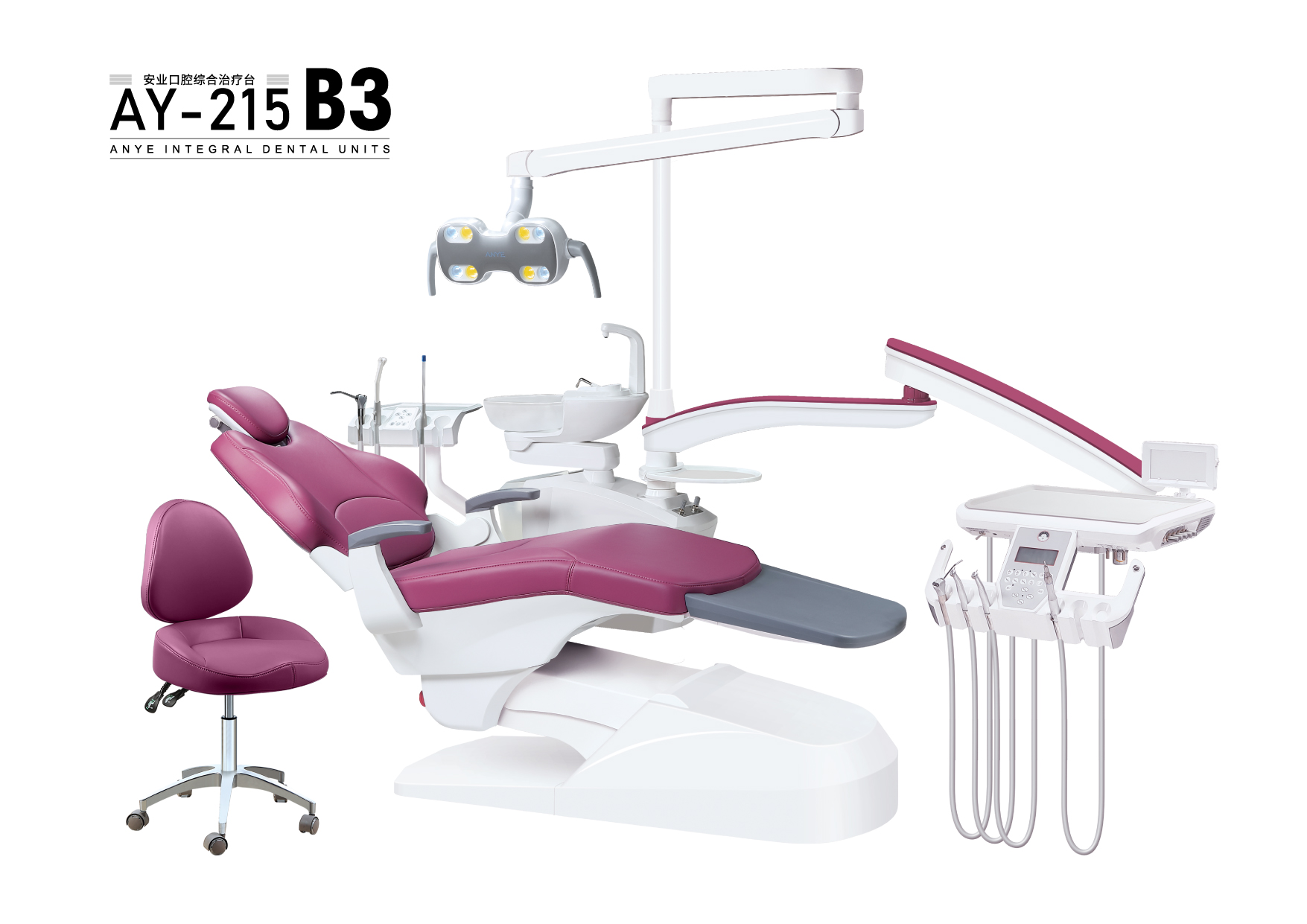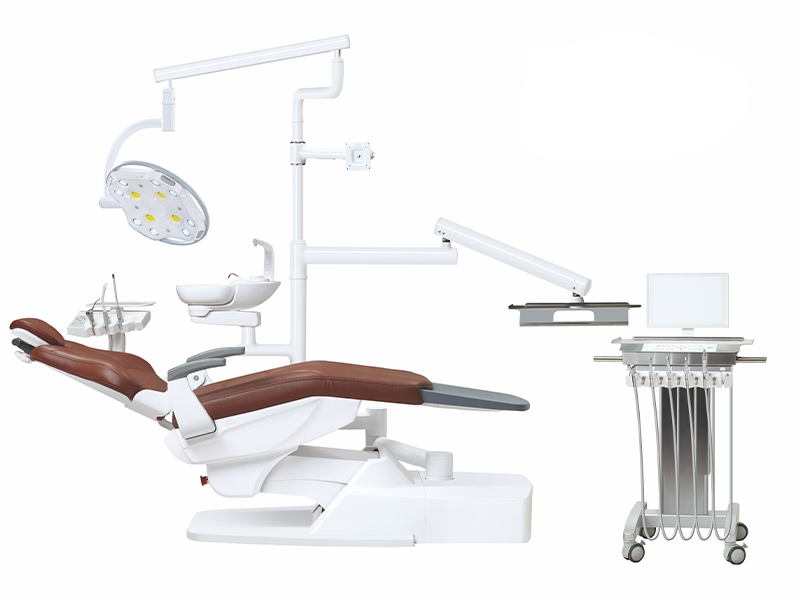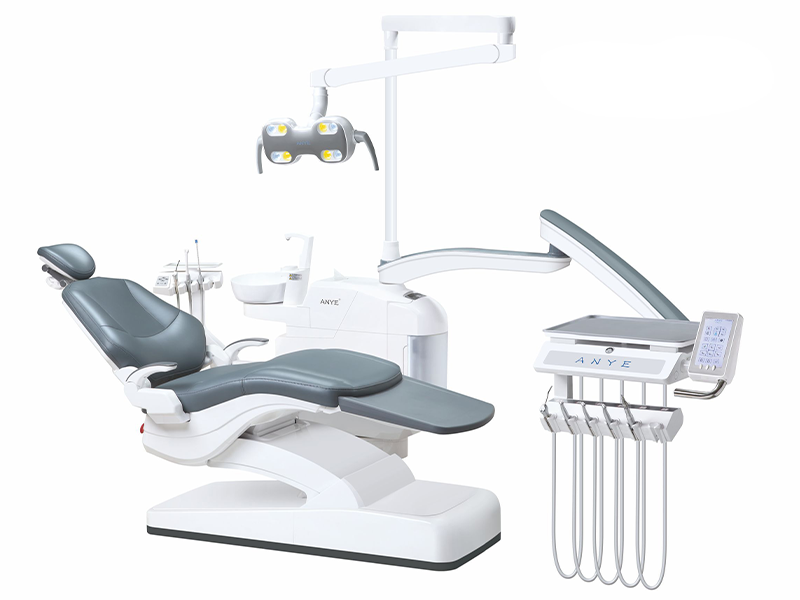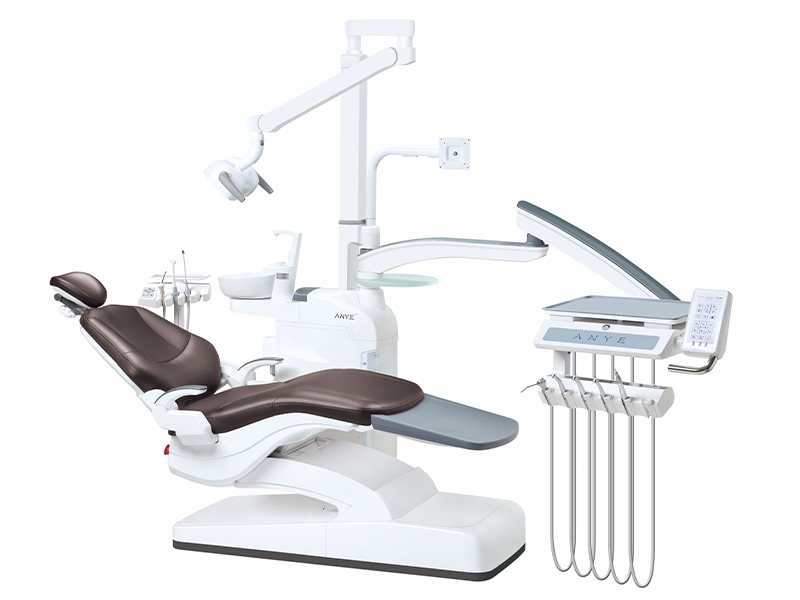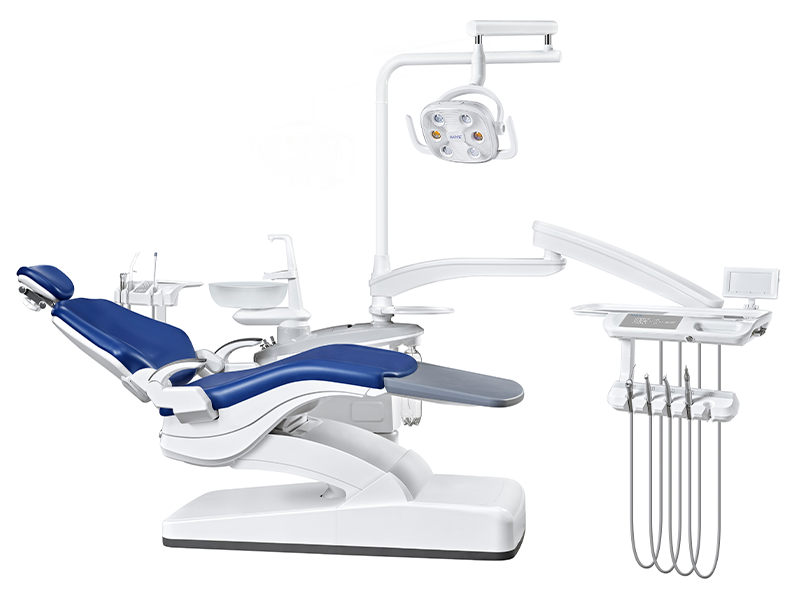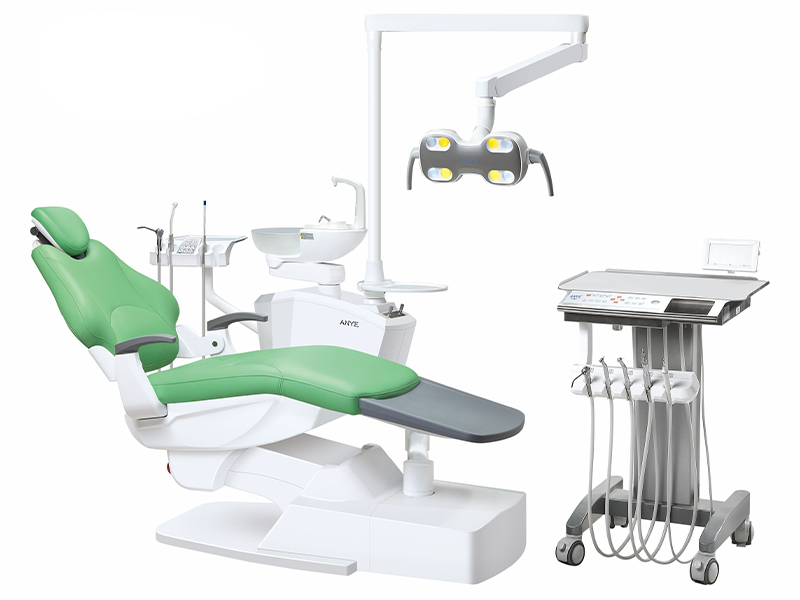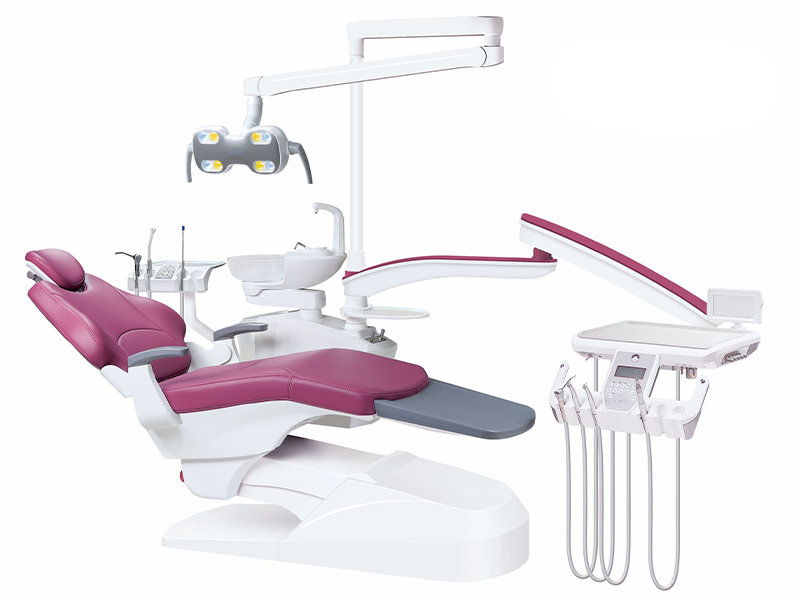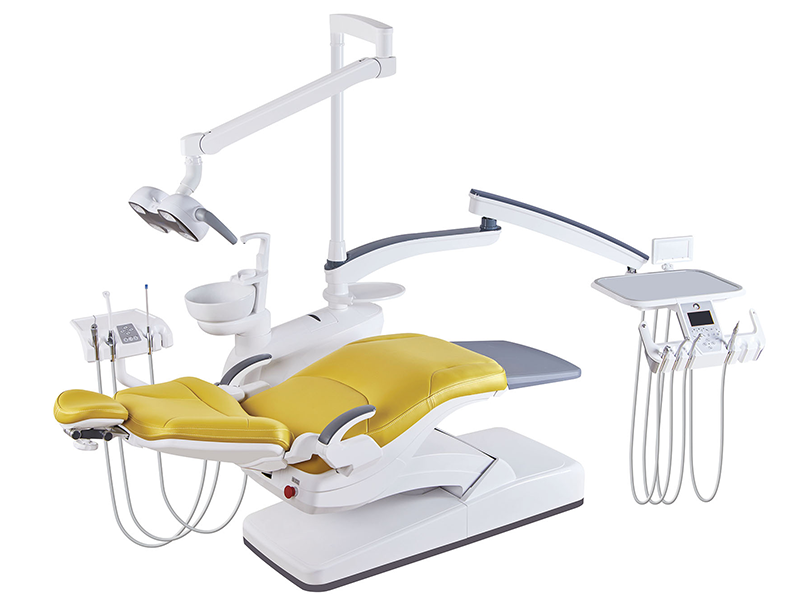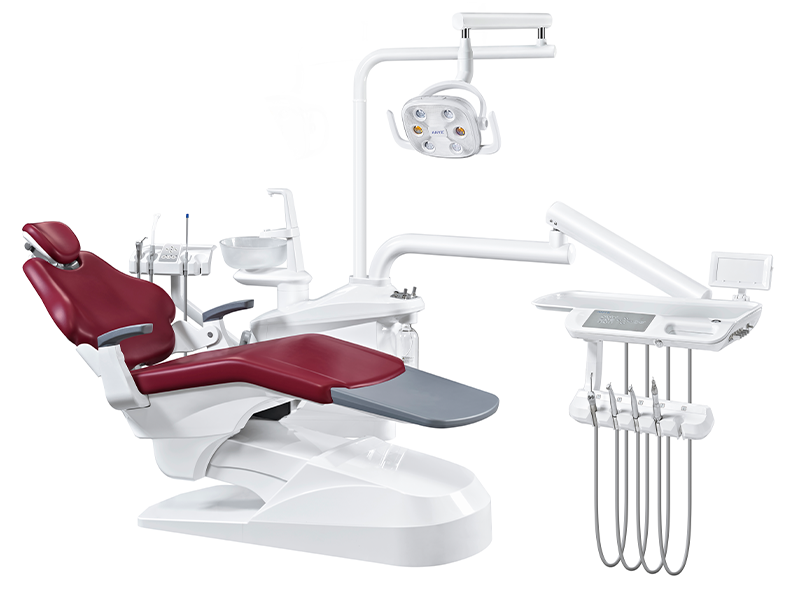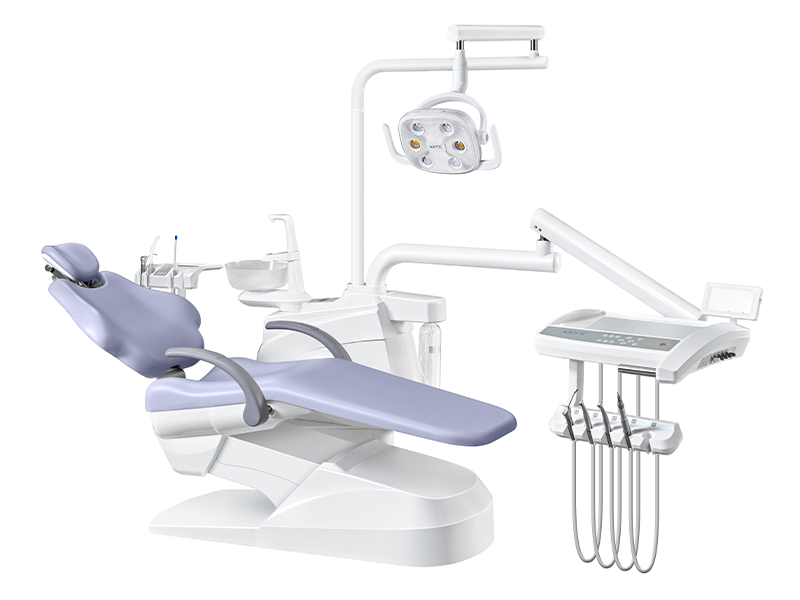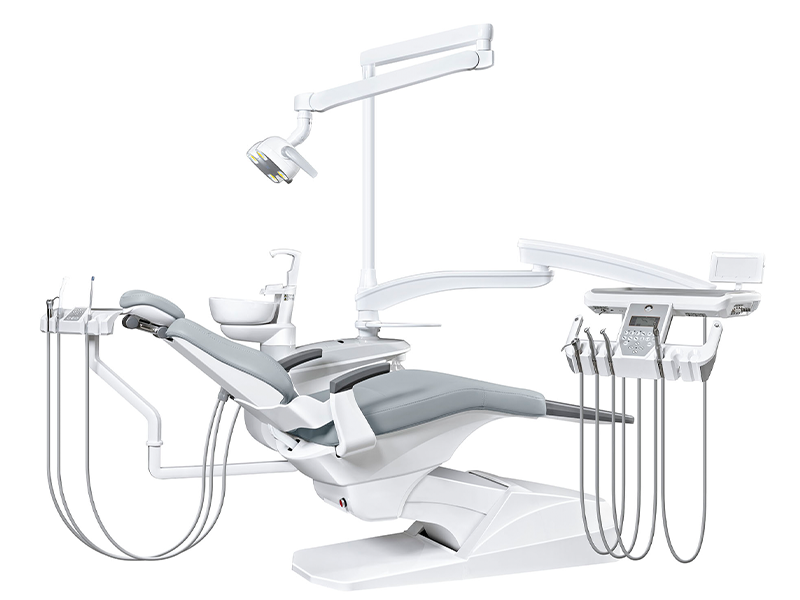In modern dental care, patient comfort and operational efficiency are top priorities. Dental chair hydraulic systems provide a cutting-edge solution, combining precision engineering with user-friendly design. These systems offer smooth, silent, and precise chair adjustments, creating a better experience for both patients and practitioners. But how exactly do hydraulic dental chairs work? In this guide, we’ll walk you through their inner workings, key components, benefits, and maintenance tips to keep your practice running smoothly. This article has been updated with the latest information for 2025.
How Do Hydraulic Dental Chairs Work?
Hydraulic dental chairs use pressurized fluid to generate controlled mechanical movements, ensuring precise adjustments during dental procedures. This system operates based on Pascal's Principle, which states that pressure applied to a confined fluid is transmitted equally in all directions. The hydraulic system enables dental chairs to move smoothly and silently, accommodating different patient positions for various dental treatments.
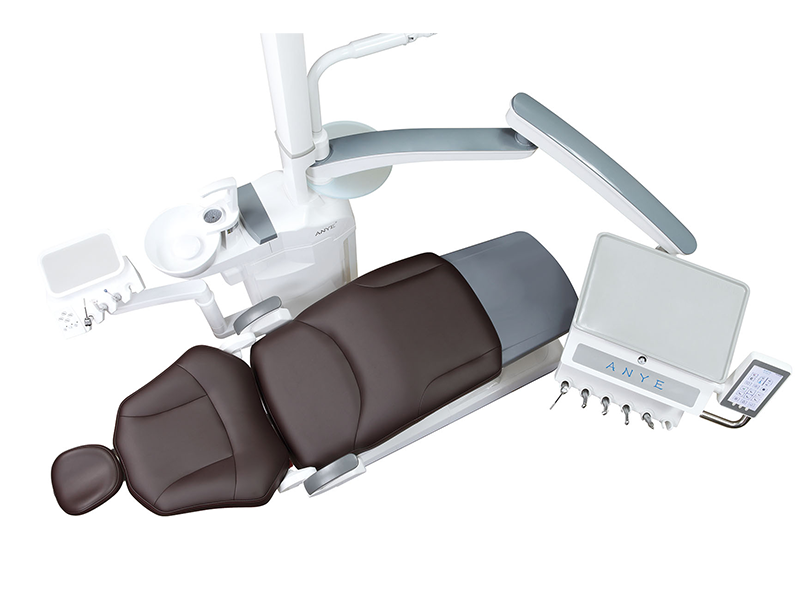
Key Hydraulic Components
-
Hydraulic Pump
The motor-driven pump pressurizes the fluid, converting mechanical energy into hydraulic power. -
Actuators
These cylinders or motors convert the hydraulic fluid’s energy into linear or rotational motion, adjusting the chair’s position. -
Control Valves
These regulate fluid flow, controlling the speed and direction of chair movement, ensuring smooth and precise adjustments.
Components of a Hydraulic Dental Chair System
The hydraulic dental chair system is powered by several key components designed for optimal performance. Here's a closer look at the system:
Power Generation Unit
- High-Capacity Piston Pump: Delivers fluid displacement at a consistent rate, ensuring smooth operation.
- Dual-Stage Filtration System: Removes 99.7% of particulate matter from the fluid, ensuring clean hydraulic power for reliable performance.
- Thermal Management: Maintains fluid temperature within a range of 15-35°C, preventing overheating and ensuring consistent operation.
Hydraulic Cylinder
- Withstands up to 4,000 PSI to handle peak loads safely, ensuring maximum operational stability during treatment.
Control Valves
- Allows for real-time, precise adjustments with a response time of 0.1 seconds, ensuring seamless patient positioning without delay.
Fluid Lines
- Constructed from FDA-grade thermoplastic materials to prevent bacterial growth and ensure hygienic operation throughout the system.
Benefits of Hydraulic Dental Chairs
Hydraulic dental chair systems offer a wide range of advantages to dental practices, including:
1. Precision and Control
Hydraulic systems allow for millimeter-perfect adjustments, enhancing patient comfort and improving treatment outcomes. These fine-tuned movements ensure the precise positioning of the patient for any dental procedure.
2. Noise Reduction
Unlike electric systems, hydraulic chairs operate at sub-25 decibel levels, ensuring a quieter, more serene environment for both the patient and practitioner. This minimizes distractions and helps patients remain relaxed.
3. High Weight Capacity
Many hydraulic dental chairs are designed to support patients up to 450 lbs, making them suitable for a wider range of body types, ensuring inclusivity in your practice.
4. Energy Efficiency
Hydraulic systems consume significantly less power compared to electric systems, saving on energy costs. Additionally, they do not require electrical components that can overheat or wear out over time.
5. Long-Term Cost Savings
Hydraulic chairs typically have lower annual maintenance costs and longer service intervals than their electric counterparts. Over time, this leads to reduced overall costs for dental practices.
Performance and Durability of Hydraulic Dental Chairs
Hydraulic dental chairs are designed to provide reliable service over many years, with key features that ensure their durability:
Extended Maintenance Intervals
Hydraulic systems often require less frequent servicing compared to electric systems, providing longer service intervals between maintenance checks.
Durability
Hydraulic systems are built to withstand over 100,000 operational cycles, providing reliable performance over many years of clinical use.
Customizable Options
Many hydraulic models come with adjustable components such as headrests, backrests, and footrests, ensuring optimal patient positioning during various treatments.
How to Maintain Hydraulic Dental Chairs
To keep hydraulic dental chairs functioning at their best, regular maintenance is crucial. Follow these actionable steps to ensure smooth operation:
1. Fluid Analysis
- Frequency: Annually
- Action: Check the fluid for viscosity changes. If the viscosity exceeds the acceptable range, replace the hydraulic fluid to avoid system malfunction.
2. Pressure Tests
- Frequency: Biannually
- Action: Perform pressure tests to verify the integrity of seals and ensure stable pressure levels. Ensure that the pressure remains within the 2,400-2,500 PSI range for optimal functionality.
3. Scheduled Fluid Replacement
- Frequency: Every 1-2 years
- Action: Replace hydraulic fluid to prevent the buildup of contaminants. This ensures the system operates smoothly and extends the life of the equipment.
4. Particulate Level Monitoring
- Frequency: Monthly or as per system specifications
- Action: Use integrated sensors to monitor fluid cleanliness, ensuring that particulate levels remain below ISO 16/13 standards.
5. Preventive Care
- Frequency: Daily checks
- Action: Visually inspect the system for hydraulic leaks or wear, especially before and after each treatment day. Check the fluid level and ensure no cracks or damage in the fluid lines.
How Hydraulic Systems Enhance Clinical Efficiency
The smooth operation of hydraulic dental chairs not only boosts patient comfort but also enhances clinical productivity. Here’s how hydraulic systems improve the efficiency of your practice:
1. Faster Adjustments
Hydraulic chairs allow for quick positioning changes, reducing setup time by 40%, which enables faster transitions between procedures.
2. Ergonomic Support
Hydraulic systems provide adjustable headrests, backrests, and footrests, offering patients optimal comfort during prolonged treatments. This reduces physical strain on both patients and dental staff.
3. Memory Presets
- Feature: Save time with one-touch memory presets for chair positions.
- Benefit: Reduces the time spent adjusting the chair by up to 3 minutes per appointment, which can significantly improve the practice’s daily workflow.
Comparing Hydraulic and Electric Dental Chairs
| Feature | Hydraulic Systems | Electric Systems |
|---|---|---|
| Noise Output | 52 dB (quieter) | 68 dB (louder) |
| Energy Consumption | Low (0 kWh) | High (18 kWh/month) |
| Adjustment Speed | 4 seconds/full range | 2 seconds/full range |
| Maintenance Intervals | Longer intervals | Shorter intervals |
Key Takeaway:
Hydraulic systems offer quieter operation, energy savings, and more predictable long-term performance compared to electric models. Fewer maintenance requirements mean less downtime, which is ideal for busy practices.
FAQs
1. How does a hydraulic dental chair move?
Hydraulic dental chairs use pressurized fluid to generate controlled movements. The fluid powers a motor-driven pump, which moves the chair’s components smoothly, allowing for precise positioning.
2. How often should I maintain my hydraulic dental chair?
Hydraulic chairs should undergo monthly visual checks, biannual pressure tests, and annual fluid analysis to ensure proper functioning and longevity. Fluid replacement is recommended every 1-2 years.
3. Can hydraulic dental chairs handle heavier patients?
Yes, many hydraulic chairs are designed to support patients up to 450 lbs, making them suitable for a broader patient demographic, improving inclusivity in your practice.
Conclusion: The Future of Dental Chair Systems
Hydraulic dental chairs have become a staple in modern dental practices. Their precise adjustments, quiet operation, and efficient energy use make them a top choice for enhancing patient care and improving clinical workflow. With regular maintenance, hydraulic systems provide long-term reliability, reducing operational costs and improving the overall practice efficiency.
Upgrade to Hydraulic Systems Today
Whether you're looking to replace outdated equipment or upgrade to a more advanced model, hydraulic dental chairs offer a combination of comfort, durability, and cost-effectiveness. Explore Anye Dental’s latest hydraulic models for the most up-to-date technology designed to fit your practice’s needs.
Visit our official website for more information: Anye Dental Official Website
Pro Tip:
Utilize your hydraulic chair’s memory preset feature to save up to 23 seconds per patient appointment, which translates to over 16 hours annually, allowing for improved patient satisfaction and practice efficiency.

